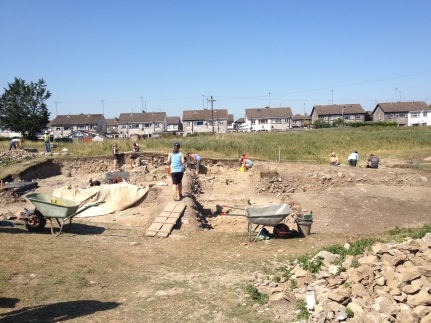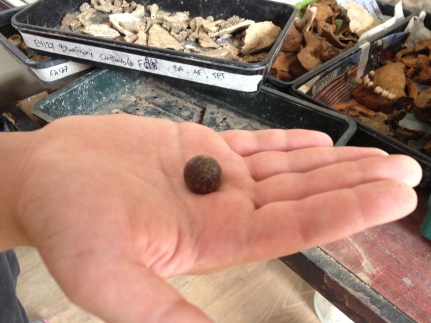By Carly Strapps
Final week… burials!
[see previous posts by Carly on her time on the Irish Archaeological Fieldschool here and here]
After two weeks of curious glances and visits to see what was taking place with the burials, finally it was my turn to have a play!
The burials at the Black Friary fall into 3 broad groups. These are the burials of medieval date, post medieval-date, and the infants and children who are thought to be buried there because they were not baptized. The medieval burials have been found within the church, either beneath the floor or in tombs set into or against the walls. The burials of post-medieval date are suspected to be people who continued to be buried in the general area of the friary post its use.
My task, along with two other students, was to locate the rest of a burial in Cutting 10 after a penetrating foot was discovered while excavating. Cutting 10 was first opened in 2013 exposing the south wall of the church. It is suspected that it also contains the northern part of the cemetery.
First we were to look for the grave cut. The soil texture generally will become looser and can sometimes change in colour in a grave cut. Often rocks will only be around the cut, rather than in it. The first thing we discovered was a skull, a very exciting moment! It was a small skull and appeared to be that of a young child. This did not seem to match up with the adult foot that was first found at all.
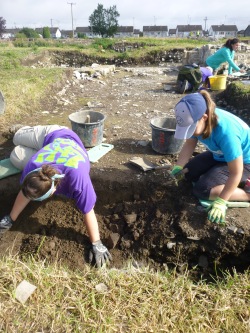
Cutting 10
Slowly over the next two days we uncovered the humerus bones, the pelvis and both femurs. The femurs were both broken/cut off and we were unable to find the remaining lower half of the skeleton. This confirmed that the original foot was definitely unrelated to the new juvenile burial that we had now found, burial 86 (approximately 3-4 years old).
Over the rest of the week we worked to expose the rest of the skeleton with minimal structure disturbance, in order to get it ready for photos and measurements. The tools that we used for this included a leaf trowel, small paintbrush, clay molder and dental picks (allowing for the removal of soil in very tight or small locations). Working with such fragile bones in a tight spot was awkward at times, but it was so fascinating and consuming that I didn’t even notice the cuts and grazes to my body until the end of each day.
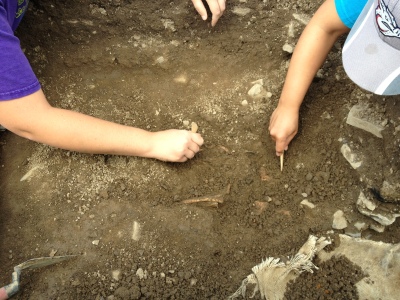
Carefully exposing Burial 86
Last day on site
Pouring rain!! I had been very lucky to mostly avoid heavy rain until today. We had to place a marquee over our burial and sponge out the excess moisture to the area. AND my gumboots and wet weather gear really got to prove their worth. But we powered on through the day taking measurements, levels and learning how to photograph the burial before it was time to dismantle our juvenile skeleton and place each bone into its corresponding labeled bag for further analysis.

Burial 86
Goodbye to burial 86! And goodbye to the Blackfriary. Goodbye to all the wonderful people I met — students, supervisors and local residents alike. I learnt so much and yet feel like I have only scratched the surface. I am already planning my return for next year, and strongly encourage anyone else in the field, experienced or not, to get involved!
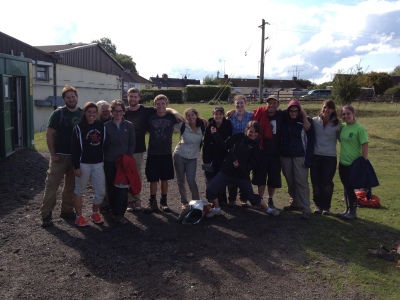
Last day with the team on site
For further information on the Irish Archaeological Field School and Blackfriary Community Archaeology Project: http://iafs.ie/


